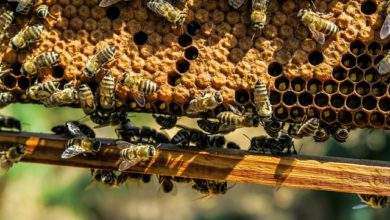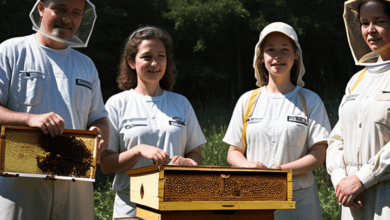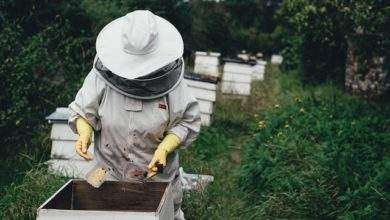Planting Flowers for Nectar Dearth for Bees

In the vast world of pollinators, bees play a crucial role in the pollination of plants, contributing to the biodiversity and sustainability of our ecosystem. To understand the significance of bees and their survival, it is essential to delve into the role of nectar as a vital food source for these buzzing creatures. Furthermore, we will explore the concept of nectar dearth and its impact on bee populations. Join us as we delve into the fascinating world of bees and the critical role nectar plays in their lives.
Role of Nectar as a Vital Food Source for Bees
Nectar, often described as the sweet reward offered by flowering plants, serves as a primary source of nutrition for bees. Let’s delve into the reasons why nectar is so vital to their survival:
- Energy Source: Nectar is a high-energy food source, providing bees with the necessary fuel to sustain their activities. As bees tirelessly flit from flower to flower, this sugary liquid serves as their main carbohydrate-rich fuel, keeping their wings buzzing and their bodies in motion.
- Nutritional Balance: Nectar is not just a source of carbohydrates but also provides bees with essential nutrients. It contains amino acids, proteins, vitamins, minerals, and trace elements vital for the growth, development, and overall well-being of these incredible insects.
- Pollen Collection: Bees predominantly collect nectar to fulfill their energy needs, but they also indirectly utilize it to collect pollen. As bees gather nectar from flowers, they inadvertently pick up pollen grains and transfer them from plant to plant, facilitating cross-pollination and enabling plant reproduction.
Understanding Nectar Dearth and its Impact on Bee Populations:
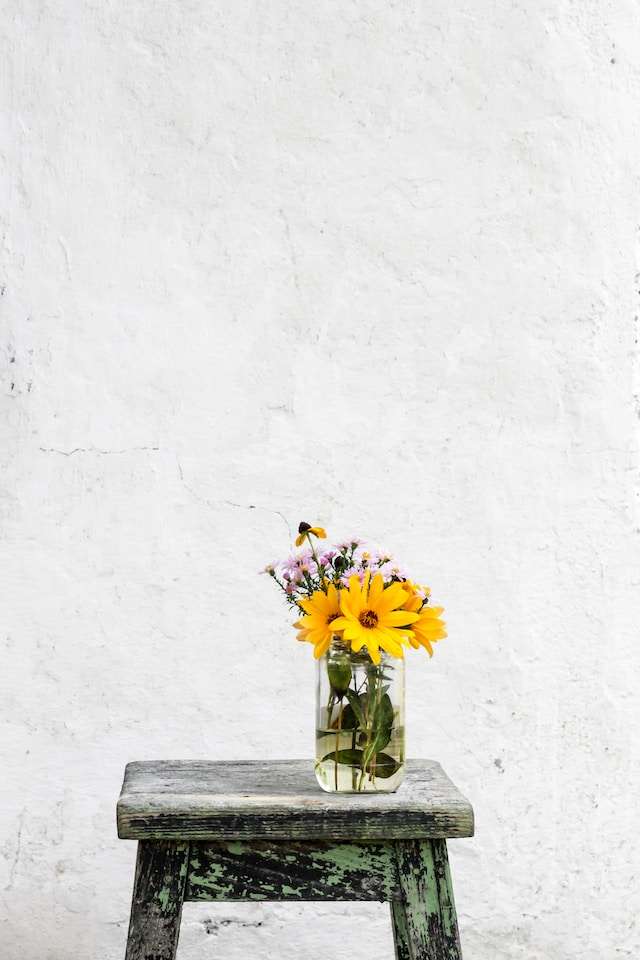
Nectar dearth refers to a scarcity or lack of available nectar sources in an ecosystem. While nectar flows fluctuate naturally throughout seasons, changes in land use practices, habitat loss, and climate variations can contribute to an insufficient supply of nectar for bees. Let’s explore the impacts of nectar dearth on bee populations:
- Reduced Survival Rates: During nectar dearth periods, bees experience a shortage of vital energy stores, resulting in reduced survival rates. Bees rely on nectar to sustain their physiological functions, including maintaining body temperature, defending their hives, and supporting hive activities. Without an adequate nectar supply, colonies may weaken, making them susceptible to diseases, predators, and other threats.
- Stunted Growth and Development: The absence of sufficient nectar negatively impacts the growth and development of bees, particularly larvae. Adequate nutrition, including nectar, is crucial for the healthy development of young bees within the hive. Nectar dearth may lead to stunted growth, weakened immune systems, and compromised overall health of the colony.
- Reduced Reproductive Success: Nectar scarcity can have significant consequences on the reproductive success of bees. In times of nectar dearth, queen bees may delay or limit egg-laying, as they assess the available resources to sustain the growing colony. This can disrupt the normal population growth and long-term survival of the bee community.
Nectar Dearth: Understanding the Definition, Causes, Seasonal Variations, and its Importance for Bee Conservation
Definition and Causes
Nectar dearth refers to a shortage or inadequate supply of nectar available to foraging bees within their foraging radius. During this challenging period, bees struggle to find sufficient amounts of nectar to sustain their hive population and support their essential tasks. Several factors contribute to nectar dearth, such as:
- Lack of Floral Resources: In some instances, fluctuations in weather patterns, habitat loss, or land-use changes can lead to a decreased availability of flowering plants within the foraging area of bees. This scarcity limits the amount of nectar accessible to bees.
- Seasonal Changes: Different times of the year can be more prone to nectar dearth. For example, during the early spring or late fall, when fewer flowers bloom, nectar dearth is more likely to occur. This scarcity of nectar-rich flowers can be challenging for bees as they attempt to sustain their colonies.
- Climate and Environmental Conditions: Climate variations, such as extended periods of drought or excessive rainfall, can also impact nectar availability. Changes in temperature and rainfall patterns directly influence the bloom time and the quantity of nectar produced by flowering plants.
Seasonal Variations and Regions Affected:
The occurrence and intensity of nectar dearth can fluctuate depending on the time of year and geographic location. Understanding these variations is crucial for beekeepers, conservationists, and researchers alike. Some key considerations include:
- Spring and Fall Dearth: As mentioned earlier, nectar dearth is more commonly experienced in the early spring and late fall. During these periods, fluctuations in temperature and the transition between seasons lead to a decrease in nectar-producing plants, leaving bees with limited forage options.
- Regional Disparities: Nectar dearth is not evenly distributed across all regions. Areas with more diverse and abundant floral resources are generally less prone to nectar scarcity. However, regions already facing challenges such as habitat loss, monoculture farming, or urbanization may experience more severe nectar dearth.
Importance of Addressing Nectar Dearth for Bee Conservation
Nectar dearth poses significant challenges to both honeybee colonies and wild pollinators. Acknowledging and addressing this issue is crucial for the conservation and well-being of bees. Here’s why:
- Colony Survival and Productivity: When bees face nectar dearth, their colony’s survival and productivity can be severely impacted. Insufficient nectar availability leads to malnourishment and weakened immune systems, making the bees more susceptible to diseases and pests. Adequate nectar resources are essential for brood rearing, honey production, and maintaining a healthy population.
- Pollination Services: Bees are crucial pollinators, facilitating the reproduction of numerous flowering plants and the production of fruits, nuts, and seeds. Nectar scarcity reduces their foraging efficiency and thus their ability to perform effective pollination services. This, in turn, affects agricultural productivity and overall biodiversity.
- Habitat Restoration and Diversification: Recognizing the importance of nectar for bees, efforts to restore and diversify habitats with nectar-rich plants become essential. By increasing the availability of floral resources, especially during periods of potential nectar dearth, we can support and conserve bee populations.
The Significance of Planting Flowers for Bees During Nectar Dearth
Bees often face challenges when nectar sources become scarce. By providing an alternative nectar source and ensuring their survival during challenging periods, we can actively support pollination and biodiversity in our area. Let’s delve into the significance of planting flowers for bees during nectar dearth.
- Providing an Alternative Nectar Source:
During certain times of the year, such as late summer or early spring, bees’ primary sources of nectar may become scarce. This scarcity can be caused by factors like climate changes or the blooming cycle of flowers.
By planting a diverse range of nectar-rich flowers in our gardens, we can offer bees an alternative nectar source when their usual forage is limited. Diverse flower choices allow bees to access various nutrients and adapt to changing environmental conditions, increasing their chances of survival.
- Ensuring the Survival of Bees During Challenging Periods:
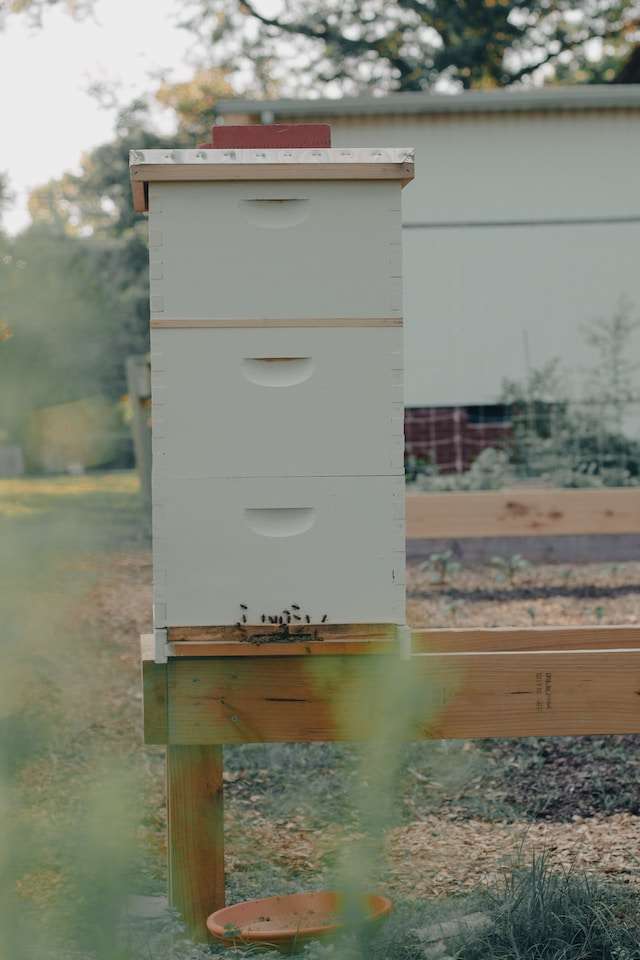
Nectar dearth can have severe consequences for bees, potentially leading to malnutrition or even colony collapse. During these challenging periods, planting flowers specifically known to bloom during nectar dearth can immensely support bee populations.
Bees rely on nectar not only for energy but also for the production of honey, which serves as their primary food source during scarce times. By providing an abundance of nectar-rich flowers, we help ensure that bees have access to sufficient resources, promoting their overall health and survival.
- Supporting Pollination and Biodiversity in Your Area:
Bees are remarkable pollinators, transferring pollen grains from one flower to another, facilitating the fertilization process and enabling the production of seeds and fruits. By planting flowers during nectar dearth, we directly support bee populations, enabling them to continue their essential role as pollinators.
Increased pollination rates contribute to the growth and diversity of plant species, ensuring the health and stability of our local ecosystems. In turn, a thriving ecosystem benefits the overall biodiversity of our area, including other beneficial insects, birds, and wildlife.
Selecting the Right Flowers to Attract Bees
By planting the right flowers, you can create an inviting and vibrant environment that will attract various bee species, ensuring a healthy and thriving garden.
- Native Flowers as Preferred Choices:
When it comes to selecting flowers to attract bees, native species should be your top preference. Native flowers have evolved alongside the local bee populations, making them a perfect match in terms of preferences and adaptations.
Native plants provide bees with a familiar food source and nectar they are naturally attracted to, resulting in increased visits and pollination activity. Native flowers also tend to be hardy and require less maintenance, making them an ideal choice for any garden.
- Consideration of Blooming Period and Flower Shape:
To maximize the attraction of different species of bees, it is essential to consider the blooming period and flower shape of the plants you choose. Bees are active during specific times of the year, and selecting flowers that bloom successively throughout the seasons ensures a consistent food supply.
Planting a diverse range of flowers with contrasting shapes and colors will also enhance the appeal to various bee species. By having an assortment of flower shapes like tubular, daisy-like, or clustered blooms, you can accommodate bees with different tongue lengths and body sizes.
- Importance of Diversity in Flower Types:
Creating a diverse garden with a variety of flower types is crucial to attracting different bee species. Bees have specific preferences when it comes to the types of flowers they visit, and by offering a range of options, you can increase the chances of attracting a wider variety of bees.
Some bees prefer larger flowers, while others are more drawn to smaller, delicate blooms. By incorporating a mix of wildflowers, herbs, perennials, and annuals, you will cater to the diverse needs and preferences of various bee species.
- Check for disease:
It is important to check for signs of disease when selecting and cultivating flowers for nectar dearth. Studies have found that bee health can be affected by diseases in their food.
Tips for Successful Flower Planting
By implementing the following strategies, you can create a welcoming habitat for bees, enjoy a diverse range of hues and sizes in your floral display, and maintain a constant nectar flow to support pollinators. Whether you are a seasoned gardener or a beginner, these tips will guide you towards a fruitful and beautiful garden.
Creating a Bee-Friendly Garden Design
When creating your garden design, consider the needs of our essential pollinators, particularly bees. By incorporating bee-friendly elements into your garden, you can help support their populations and contribute to the overall health of our ecosystem.
- Choose native plants: Native flowers are well-adapted to the local climate, making them more attractive to native bees. Research the native plant species in your area and include them in your garden design.
- Provide a water source: Bees require water for hydration and to dilute nectar to the right consistency. Set up a shallow water basin with pebbles or floating plants to provide a safe landing spot for bees.
Providing a Variety of Flower Colors and Sizes
To create a visually stunning garden, it is crucial to incorporate a diverse range of flower colors and sizes. This not only adds aesthetic appeal but also attracts a greater variety of pollinators, ensuring efficient pollination throughout your garden.
- Choose a color palette: Select flowers with different hues and shades to create a delightful visual contrast. Consider complementary colors, such as purple and yellow or red and green, to make your garden pop.
- Mix flower sizes: Combine flowers that vary in size and shape to create texture and depth in your garden. The presence of both small and large blossoms will attract different types of pollinators, contributing to a balanced ecosystem.
- Plan for seasonal blooms: Research the bloom periods of different flowers. By planting a variety of species that bloom at different times, you can ensure a constant supply of nectar for pollinators throughout the year.
Maintaining a Constant Nectar Flow throughout the Year
Ensuring a consistent nectar flow is vital for pollinators, especially during critical times when flowers may be scarce. By carefully selecting flowers and implementing thoughtful practices, you can help maintain a reliable nectar source, promoting a healthy environment for both plants and pollinators.
- Plant perennial flowers: Perennials return year after year, providing a reliable nectar source for pollinators. Incorporate perennial flowers into your garden to ensure a consistent food supply.
- Include early and late blooming plants: Include early blooming flowers in your garden to provide nourishment during spring when bees emerge from hibernation. Similarly, late blooming flowers will sustain pollinators as they prepare for winter.
- Avoid the use of pesticides: Chemical pesticides can be harmful to bees and other pollinators. Opt for natural pest control methods or choose organic gardening practices to protect the health of your garden’s visitors.
Conclusion
Planting flowers for nectar dearth for bees is an important way to maintain and promote healthy bee populations and in turn, ensure that our own food chain is unaffected. Native and local species of flowers should be chosen as they are already well-adapted to the region and offer resilience against environmental changes.
Planting a variety of different flowers throughout the seasons is essential for providing a sustainable food source for the bees and in turn supporting their evolutionary processes.
FAQ
What is nectar dearth, and why is it important for beekeepers to address it?
- Nectar dearth refers to periods when there is a scarcity of nectar-producing flowers, which are crucial food sources for bees. During these periods, honeybee colonies may struggle to find enough food, leading to nutritional stress and decreased honey production. Addressing nectar dearth is essential to support the health and well-being of honeybees.
How can planting flowers help combat nectar dearth?
- Planting a diverse range of flowering plants can provide a continuous and abundant source of nectar for bees, helping mitigate the impact of nectar dearth. By ensuring a steady food supply, beekeepers can support the vitality of their colonies and promote a healthy environment for bees.
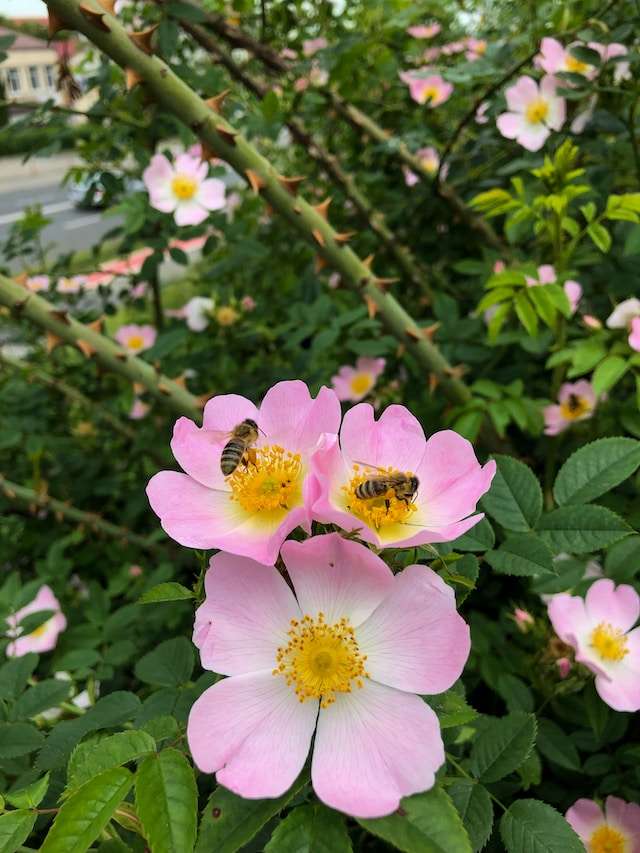
Which flowers are best suited for addressing nectar dearth?
- When selecting flowers to address nectar dearth, it is essential to choose varieties that provide ample nectar and pollen. Examples of beneficial flowering plants for bees include lavender, sunflowers, borage, phacelia, marigolds, and wildflowers. Planting a mixture of annuals, perennials, and native plants will extend the nectar flow throughout the season.
When is the best time to plant flowers for nectar dearth?
- The ideal time to plant flowers for nectar dearth depends on your region and the specific climate. In general, planting should coincide with the start of the growing season to allow ample time for the flowers to establish themselves and bloom. Late winter or early spring is often a suitable time in many regions.
How can I attract bees to my garden or land?
- To attract bees, select flowers with vibrant colors, as bees are particularly attracted to blues, purples, and yellows. Create clusters of the same plant species to make it easier for bees to locate the flowers. Additionally, provide a water source, such as a shallow bird bath filled with fresh water, as bees require water for hydration.
Can I plant flowers for nectar dearth in containers or pots?
- Yes, you can plant flowers in containers or pots, making them suitable for balconies, patios, or small spaces. Ensure that the containers have proper drainage and use nutrient-rich potting soil. Remember to water the plants regularly and provide sufficient sunlight. By planting a variety of pollinator-friendly flowers in containers, you can still support bees even with limited space.
How long does it take for the flower plants to start attracting bees?
- The timeline for flower plants to attract bees can vary depending on the species and environmental conditions. Generally, it can take a few weeks for flowers to bloom and begin attracting bees. Patience is key, as the time it takes may differ based on factors such as climate, plant type, and local bee populations.
